Below is a table of all DataVersify Activities – Data Nuggets for which we have a Scientist Profile. Click on the title to open a page displaying the Data Nugget activity, teacher guide, and links to the Profile on Project Biodiversify. The table can be sorted and searched.
For more information on Project Biodiversify, visit their website! For more information on the collaboration between Data Nuggets and Project Biodiversify, check out our Publications & Research page!
| Data Nugget Title | Scientist Profiles | Summary | Content Level | |
|---|---|---|---|---|
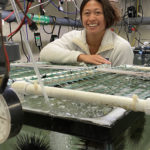 | Do urchins flip out in hot water? | Erin de Leon Sanchez | Corals are the most important reef animals since they build the reef for all of the other animals to live in. But corals only like to live in certain places. In particular they hate living near algae because the algae and coral compete for the space they both need to grow. Perhaps if there are more vegetarians, like urchins, eating algae on the reef then corals would have less competition and more space to grow. | 1 & 3 |
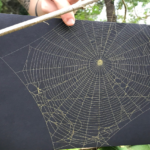 | Spiders under the influence | Aaron Curry | People use pharmaceutical drugs, personal care products, and other chemicals on a daily basis. Often, they get washed down our drains and end up in local waterways. Chris knew that many types of spiders live near streams and are exposed to toxins through the prey they eat. Chris wanted to compare effects of the chemicals on spiders in rural and urban environments. By comparing spider webs in these two habitats, they could see how different the webs are and infer how many chemicals are in the waterways. | 2 |
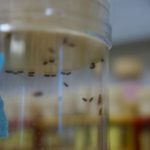 | Stop that oxidation! What fruit flies teach us about human health | Biz Turnell | Each of our cells is home to mitochondria, tiny factories whose job is to turn the food we eat into the energy we need to live. But during this process oxidative damage can cause harm to everything in the cell. There are two ways that bodies can prevent oxidative damage: antioxidants and more efficient metabolic pathways. Biz looked at fruit flies with varying genetics for these two strategies and wanted to test whether the level of oxidative damage in eggs and sperm would influence how many offspring a female had. | 4 |
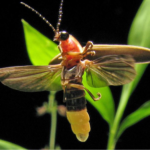 | Blinking out? | Julia Perrone | Many people have fond memories of watching fireflies blink across open fields and collecting them in jars as children. This is one of the reasons why fireflies are a beloved insect species. However, there is concern that their populations are in decline. Scientists turned to the longest-running study of fireflies known to science to see if this is the case! | 2 |
 | Raising Nemo: Parental care in the clown anemonefish | Tina Barbasch | Offspring in many animal species rely on parental care; the more time and energy parents invest in their young, the more likely it is that their offspring will survive. However, parental care is costly for the parents. The more time spent on care, the less time they have to find food or care for themselves. In the clown anemonefish, the amount of food available may impact parental care behaviors. When there is food freely available in the environment, are parents able to spend more time caring for their young? | 3 |
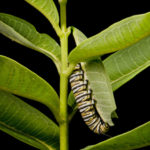 | How milkweed plants defend against monarchs | Anurag Agrawal | For millions of years, monarch butterflies have been antagonizing milkweed plants. Although adult monarchs drink nectar from flowers, their caterpillars only eat milkweed leaves, which harms the plants. The only food for monarchs is milkweed leaves, meaning they have evolved to be highly specialized, picky eaters. But their food is not a passive victim. Like most other plants, milkweeds fight back with defenses against herbivory. Which defensive traits are helping in the fight against herbivory? | 3 |
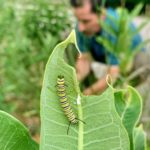 | Mowing for Monarchs Part 1 & Mowing for Monarchs Part 2 | Gabe Knowles | During the spring and summer months, monarch butterflies lay their eggs on milkweed plants. Milkweed plays an important role in the monarch butterfly’s life cycle. When milkweed is cut at certain times of the year new shoots grow, which are softer and easier for caterpillars to eat. Scientists set out to see if mowing milkweed plants could help boost struggling monarch populations. | 2 |
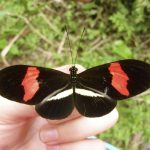 | Why are butterfly wings colorful? | Adriana Darielle Meija Briscoe | Big wings allow butterflies to fly everywhere with ease. But you may wonder, why are the wings of some species so brightly colored? The red postman butterfly lives in rainforests in Mexico, Central America, and South America. The color pattern on its wing is usually a mix of red, yellow, and black. These bright colors may warn birds and other predators that they would not make a tasty meal. Another potential reason for butterflies to have bright colors and dramatic patterns is to attract mates. | 3 |
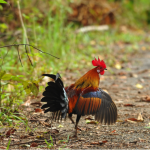 | Feral chickens fly the coop | Eben Gering | Sometimes domesticated animals escape captivity and interbreed with closely related wild relatives. Their hybrid offspring have some traits from the wild parent, and some from the domestic parent. Traits that help hybrids survive and reproduce will be favored by natural selection. On the island of Kauai, domestic chickens escaped and recently interbred with wild Red Junglefowl to produce a hybrid population. Over time, will the hybrids on Kauai evolve to be more like chickens, or more like Red Junglefowl? | 3 |
 | Getting to the roots of serpentine soil | Allie Igwe | When an organism grows in different environments, some traits change to fit the conditions. Serpentine soils have high amounts of toxic heavy metals, do not hold water well, and have low nutrient levels. Low levels of water and nutrients found in serpentine soils limit plant growth. Because serpentine soils have fewer plant nutrients and are drier than non-serpentine soils, Alexandria thought that plants growing in serpentine soils may not invest as much into large root systems. | 2 |
 | Streams as sensors: Arctic watersheds as indicators of change | Arial Shogren | As the world warms from climate change, the Alaskan Arctic is heating up. This is causing permafrost, or the frozen underground layer of rock and ice, to melt. When permafrost melts, plant material that has been stored for thousands of years begins to decay, releasing carbon and nitrogen from the system. Ecologists can act like “ecosystem accountants” measuring the balance of material that goes into and out of these systems. | 3 |
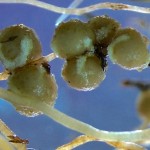 | Does a partner in crime make it easier to invade? | Tomomi Suwa | Mutualisms are a special type of relationship in nature where two species work together and both benefit. This cooperation should lead to each partner species doing better when the other is around – without their mutualist partner, the species will have a harder time acquiring resources. But what happens when one partner cheats and takes more than it gives? | 3 |
 | Purring crickets: The evolution of a new cricket song | Robin Tinghitella | About twenty years ago, scientists discovered male Pacific field crickets in several spots in Hawaii had stopped making songs due to selection from a parasitoid fly that uses the songs to locate their hosts. One summer, scientists heard what sounded like a purring cat, but there was no cat in sight. This sound was coming from crickets, and was unlike anything ever observed before. Could it be the beginning of evolution of a novel mating signal? | 3 |
 | Buried seeds, buried treasure | Marjorie Weber | Over 100 years ago, a scientist named William J. Beal had a question: how long do seeds survive underground? He started an experiment by filling 20 bottles with seeds from 50 plant species, buried them on campus, and creating a map to find them in the future. This map have been passed down from scientist generation to generation. The most recent bottle was dug up in 2021, and scientists tested how many seeds were still able to germinate after 142 years underground. | 2 |
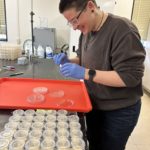 | Does the heat turn caterpillars into cannibals? | Kale Rougeau | When Kale started graduate school, they joined a lab that studies how climate change affects the spread of disease in fall armyworms, a type of caterpillar. Fall armyworms can get infected with a special type of virus and it can be spread through cannibalism. Do warmer temperatures cause caterpillars to be hungrier, leading to more cannibalism and disease spread? | 3 |
 | What big teeth you have! Sexual selection in rhesus macaques | Raisa Hernández-Pacheco | In Cayo Santiago there is one of the oldest free-ranging rhesus macaque colonies in the world. Scientists have gathered data on these monkeys and their habitat for over 70 years. The program monitors individual monkeys over their entire lives, and when they die their bodies are recovered and skeletal specimens are stored in a museum. These skeletal specimens can be used by scientists today to ask new and exciting questions, for example, what traits are under sexual selection in this population? | 3 |
 | Reconstructing the behaviour of ancient animals | Holly E. Anderson | Holly specializes in using fossils to paint a picture of the lifestyles of ancient animals. She uses the shape, structure, damage patterns, and burial poses of bones, and compares them to modern bones. By using what we know about living species, Holly can reconstruct the life and death of ancient organisms. Holly compared a primate skull fossil to its living relatives to see if she can determine if the ancient primate was nocturnal, diurnal, or cathemeral. | 4 |
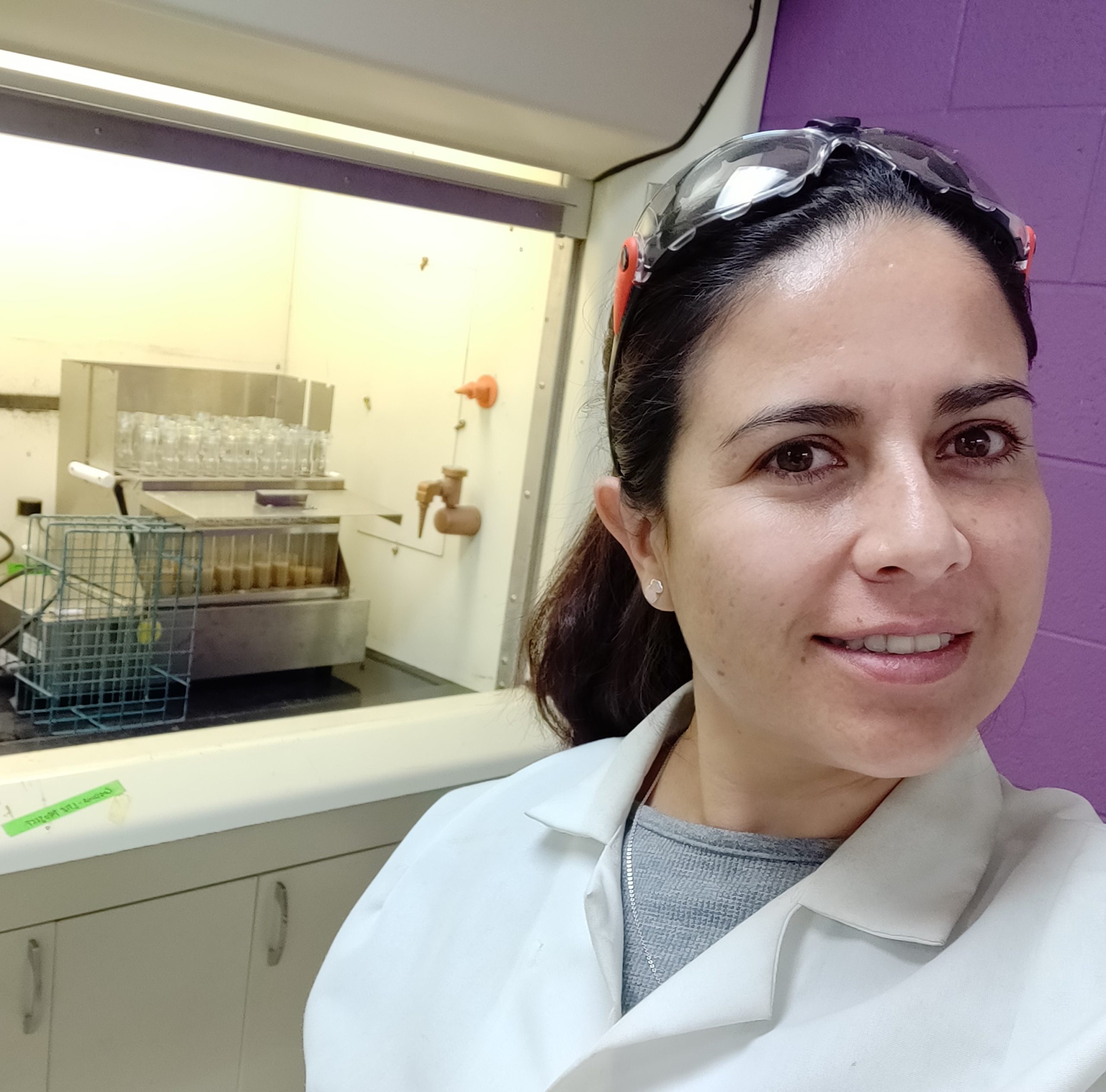 | Farms in the fight against climate change | S. Carolina Córdova | Caro Córdova is a soil scientist and trained agroecologist at the University of Nebraska-Lincoln. Her research emphasizes carbon sequestration, nitrogen fixation, and long-term resilience in diverse cropping systems, contributing to advancing regenerative agriculture globally. | 4 |

